Description
Bhagavatha Maha Purana is the gem among Puranas and is the foremost of Vaishnava Scriptures. It is considered to be the essence of all Puranas and is considered to be the utmost important scripture for those who follow Bhakti Yoga. Bhagavatha is filled with narrations of devotees such as Ajamila, Dhruva, Prahlada, and describes the 24 avataras of Bhagwan Vishnu in detail 10th Skanda exclusively discusses Sri Krishna Leela in a way like no other Purana.
The First Skanda of Bhagavtha discusses Vyasa’s nyrasya, Narada’s previous life, Asvathama’s unjustified anger and usage of Brahma Siro Nama Astra, Krishna protecting Pareekshith in Uttara’s womb, birth of Preekshith, Gandhari, Dritharashtra and Kunti leaving Hastinapur with Vidura, and leaving bodies in the forest. Pareekshit controls Kali and grants him 5 places to live.
The second Skanda discusses glory of Bhakti, Srushti /creation, Narayana’s many avataras, Pareekshit’s questions to Suka Maharshi and the chutsloki Bhagavat – Bhagavat in 4 Slokas.
The Third Skanda begins with Vidura meeting Maitreya when the latter explains about Sri Krishna Niryana. On Vidura’s questions, Maitreya explains the origins of creation, Varaha Avataraa, and birth of Maruts. Narrations of Sanaka, Sanandana Sanatana and Sanat Kumara cursing Jaya and Vijaya in Vaikuntha, Hiranyaksha, marriage of Devahuti and Kardama and how Bhagwan Vishnu is born to them as Kapila Maharshi are explained. Dhyana Yoga, Bhakti Yoga are then explained in detail and the book concludes with description on Moksha.
The Fourth Skanda discusses Glory of Siva in great detail. Sati’s marriage to Siva, Daksha’s hatred for Siva, Daksha Yagnya, Sati’s sacrifice, Veerabhadra’s birth, Slaying of Daksha and re-birth of Daksha are discussed. Adharma’s family tree, Kali’s lineage are explained followed by Narration of Dhruva and finally concluding with the narration of Puranjana.
The Fifth Skanda details the narrations of Priyavrata (Son of Svayambhu Manu), Agneedra, Maha Vishnu’s Rishabha deva Avatara and the life of Jada Bharatha finally concluding with Jada Bharata’s discourse to Raho Guna.
The Sixth Skanda begins with various descriptions of Naraka (Hell) and the types of punishments for various sins. Ajamila’s fall and rise demonstrates the power of reciting the name Narayana during one’s final moments. Daksha’s anger towards Narada, Viswaroopa becoming Deva Guru in the absence of Brihaspati, Indra’s sin, Vritrasura’s birth, victory over Indra, Dadichi’s sacrifice, origins of Vajrayudha, Indra slaying Vritrasura and Vritrasura’s previous life are explained in detail. Highlights of this Skanda are the demonstration of power of chanting the name of Narayana, sacrifice of Dadichi and how when a devotee wins the abode of Narayana even after taking a birth of Rakshasa.
The Seventh Skanda of Bhagavatha begins with Hiranyakasipu’s tapas and continues to explain Narada rescue of Hiranyakasipu’s pregnant wife, birth of Prahlada, Hiranyakasipu’s torture of Prahlada, Avatara and Glory of Narasimha, Tripurasura Samhara and finally concludes with Dharma’s of men and women.
The Eighth Skanda details the power of devotion and how a Devotee’s Bhakti protects them across lives through the narration of Gajendra Moksham. It then continues to detail Ksheera Sagara Madhana (churning of the ocean), war of Devas and Danavas, Mohini avatar, Bali’s victory, Aditi’s tapas, Avatara of Vamana, Vamana becoming Trivikrama and finally concluding with description of Pralaya and Matsya Avatara.
The Ninth Skanda begins with the narration of Sudyumna, Prushudra, marriage of Sukanya and Chayavana (Son of Brighu). Narrations of Ambareesha, Saubhari, Harischandra, Sagara, Ganga’s descent and the narration of Kahtwanga are explained in detail. Rest of the Skanda narrates the Rama Avatara, Parasurama Avatara and concludes with the narration of Yayati.
While Bhagavatha Purana is considered as the essence of all Puranas, the Tenth Skanda is considered as the essence of the Bhagavatha Purana itself. It recounts the leela of Bhagwan Sri Krishna in detail. Beginning with Sri Krishna’s birth, it goes on to explain Krishna’s arrival at Gokula, Slaying of Putana, Sakatasura, Trunavartha, Dhenukasura, Aghasura and Pralambasura. It explains the stealing of the butter, Brindavana leela, Kaleeya mardhana, Davanala Bhakshana (absorbing the great forest fire), Govardhana Uddhara, slaying of Kamsa, Victory over Jarasandha, Rise of Muchukunda, marriage with Rukmini, Pradyumna, marriage of Jambavati, Syamantaka Mani, Slaying of Narakasura, Usha Aniruddha’s marriage, Slaying of Paundraka Vasudeva, Dvividha and Sisupala, and concludes with Samba’s marriage.
The Eleventh Skanda begins with the Musala, the origins of destruction of Yadu vamsa. It then narrates the travel to Prabhasa, Return of Krishna and Balarama to heavenly abodes, Glory of Bhakti and Dhyana, Dharmas of various Varnas and Ashramas.
The twelfth and final Skanda begins with the glory of Kali yuga and its great benefits. It then discusses Srushti (creation), and Laya (destruction). It then narrates Markandeya’s tapas and his vision of Vata Patra Sayee and concludes with Sankshipta (summarized) Bhagavatha and the Mahatmya (glories) of Bhagavtha

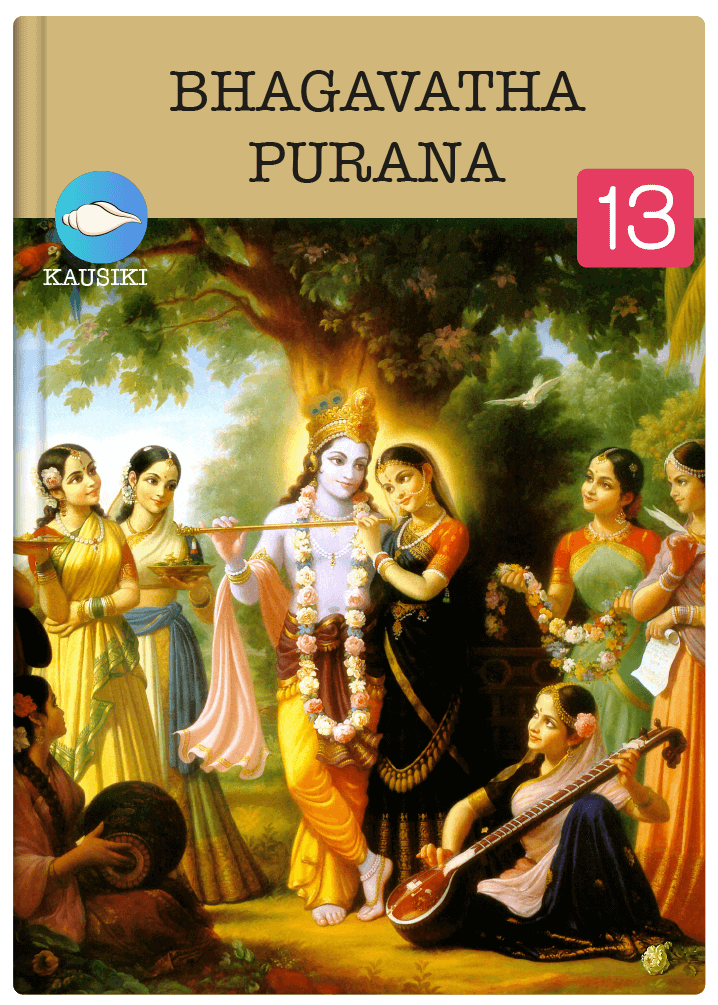
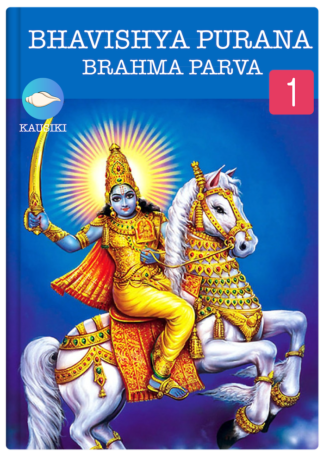
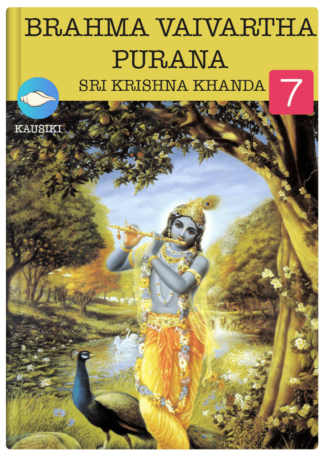
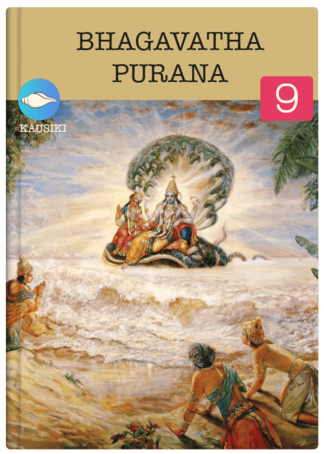
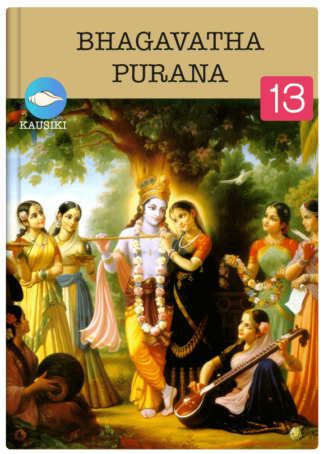
Reviews
There are no reviews yet.